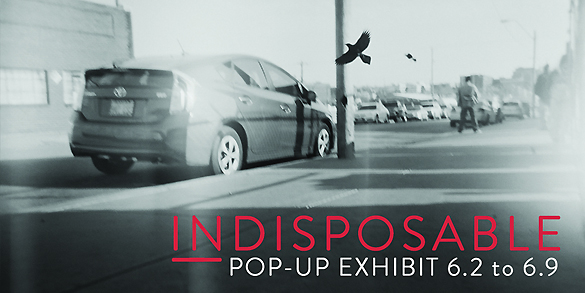Kansas City’s “Indisposable” Street Photographers | Programs That Pop
The adage “a picture is worth a thousand words” applies to the most recent photography exhibit at the Kansas City Public Library (KCPL), MO: “Indisposable,” which featured photographs taken by homeless patrons showcasing their everyday lives on the street.
Like many urban libraries, KCPL has a large number of patrons experiencing homelessness. Our Community Outreach VISTAs (Volunteers in Service to America) had recently started a program called Coffee and Conversations (C&C), which connect homeless patrons to local services such as housing, food, and legal resources. But the VISTAs and staffers also wanted to make sure the library was helping address our patrons’ creative and intellectual needs. The staff got the idea for a photography exhibit from the Dallas Public Library’s Homeless Engagement Initiative and decided to combine it with the library’s bimonthly art event taking place on First Fridays, which celebrates art in the Kansas City community.
FROM CONCEPT TO GALLERY
The project took four months from concept to actualization, led by AmeriCorps VISTAs Jason Pearl and Emily Luedtke, who worked in KCPL’s community outreach department for a year under librarian Mary Olive Joyce. Luedtke came up with the program’s title, “Indisposable,” as a take on the disposable camera—while the cameras were disposable, the images are not. The title is also a reminder that people, including our homeless patrons, are not disposable, although sometimes it seems society treats many that way.
“Indisposable” was supported entirely through donations of money, time, and expertise. That included 30 disposable cameras, several hours of curation from architectural and fine art photographer Mike Sinclair, and an additional $620 to cover film processing, proofs, digitized scans, and small gifts for the artists who participated.

The project was open to any homeless patron who wanted to take part. We first told them about it at the March C&C, where the first round of cameras were distributed. They were then asked to return the cameras at the next C&C program in April. Once those cameras were returned, Pearl and Luedtke handed out another set of cameras. The photographers had a maximum of four weeks with each device, but they could stop by the library and return them at any time. The final deadline was in early May. A total of 12 patrons participated.
When it came to selecting the pictures, the curation team picked images based on the physical quality and the subject matter. For example, we chose photos of homeless camps because that’s not something the average person gets to see. We also chose photos showing homeless patrons doing the same kinds of things that anyone does on a daily basis: hugging children, playing with pets, cleaning up, riding public transportation.
While the photographers didn’t take part in the final selection, they had input into the process. They shared their photos among their peers and asked for honest feedback. One said he was just as curious to see what his fellow photographers were shooting.
One of the main logistical issues was where to find a place that could still process actual film—and in a timely manner. Fortunately, we found a local shop that could process three or four rolls per weekend.
APPRECIATION AND VALUE
The major goal of this program was to raise awareness and consciousness about people experiencing homelessness in Kansas City. Often we see people on the street and it’s far too easy to turn away. These photographers had an opportunity to show the community a glimpse of their reality. For example, some of the photographs were of Kansas City’s St. Patrick’s Day parade—floats, marchers, thousands of people waving and shouting. But knowing that the photographer didn’t have a home to return to, or might not have something to eat that night, adds a sobering layer to the image.
“Indisposable” also meets the basic human need to be appreciated and valued. For the photographers, that their work was showcased and their voices heard was a huge milestone. All of our patrons knew the basics of using a disposable camera, but some had backgrounds in photography. One man’s interest went back to his track racing days, when he would document the races and the people. Sinclair, our photographer, not only curated the images, he also attended two C&C programs where he sat with the artists for a few hours, talking about their work one-on-one, asking questions, and answering any that they might have.
“INDISPOSABLE” TRAVELS
While the pop-up exhibit was only open from June 2–9, the images will get more exposure outside of our walls. They will travel to a local shelter, Morning Glory, and be on display for a month; then the city’s Point-in-time homelessness count committee, which works to count all of the homeless people in Kansas City much like a census would, wants to showcase “Indisposable” at its July celebration. After that, the photos will be in an art gallery in Kansas City’s Crossroads Arts District. The library will retain ownership of the collection, which will be available for loan to other galleries.
While our staff does a tremendous job of working with our homeless patrons, this exhibit and project made it personal. It was eye-opening to hear their stories and work directly with them. We gained their trust, and they gained ours—which means we will be able to do more together.
RELATED
ALREADY A SUBSCRIBER? LOG IN
We are currently offering this content for free. Sign up now to activate your personal profile, where you can save articles for future viewing









Add Comment :-
Comment Policy:
Comment should not be empty !!!